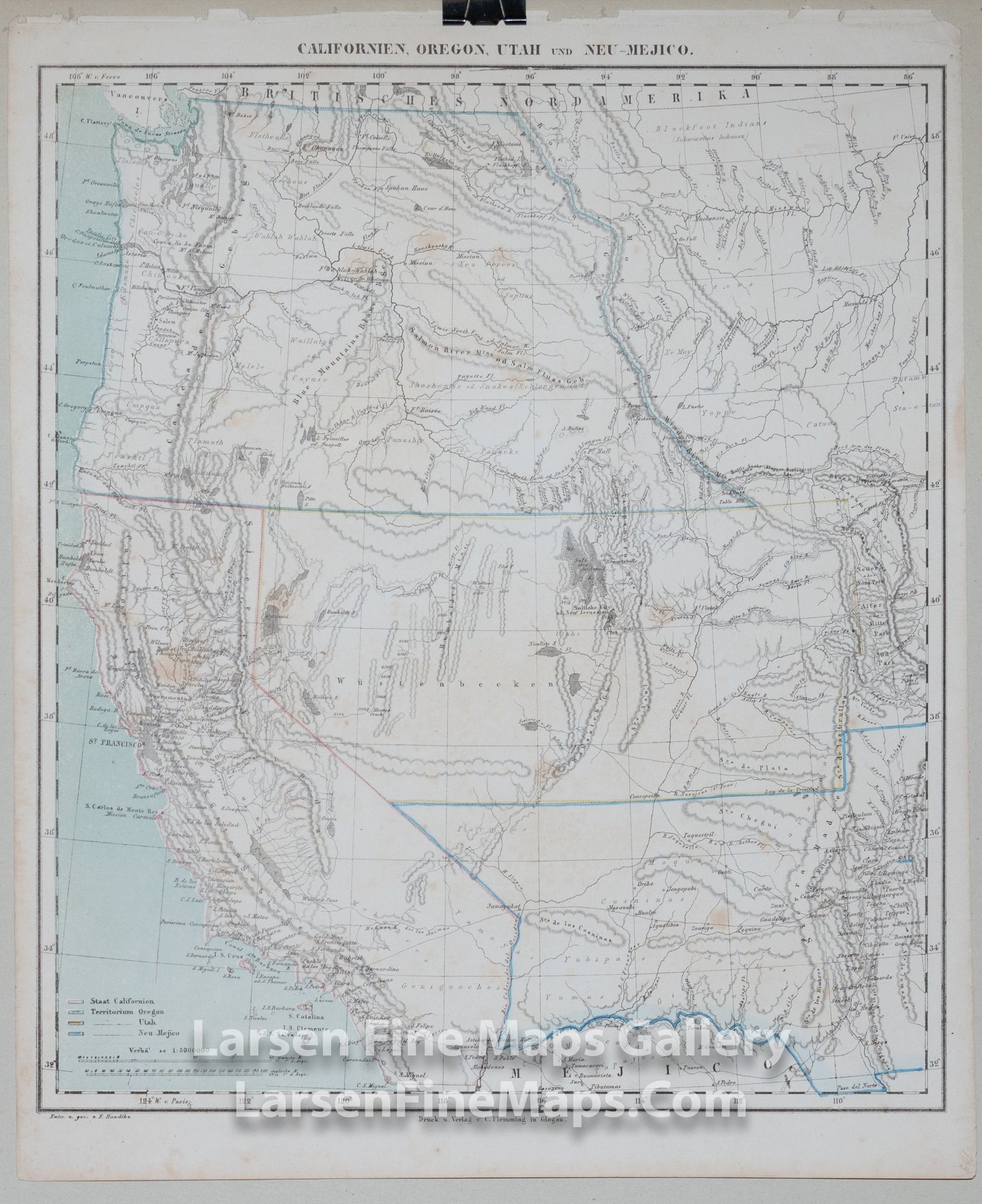
YEAR PUBLISHED: 1854
Californien, Oregon, Utah und Neu Mejico
DESCRIPTION
Carl Flemming was the founder of an important German firm located in Berlin and Glogau and this map shows characteristic German detail. Germans were very interested in the western parts of the United States at this time and the atlas from which this map came contained not only two maps of the United States as a whole-one single sheet and one four part map-but also a number of regional maps including this one of the area to the west of the Rocky Mountains. The topography is graphic and begins to show an understanding of the complexity of the ridges, mountains, buttes, etc. between the Rockies and the Sierra Nevadas. The Great Salt Lake is shown, with ÒSaltlake City od New JerusalemÓ indicated, and there is no evidence of the mythical Òriver of the west,Ó reflecting that Flemming had access to the information brought back by the explorers and emigrants who crossed the Great Basin in the early 1850s. Indian tribes are indicated throughout, as are some of the early trails. The political situation is shown as it existed before the creation of the Washington Territory (1854), with the state of California and three territoriesÐOregon, Utah and New MexicoÐindicated with outline color explained in a color key in the lower left.
One of the best Topographical and Geographical coverages of the West to appear in a mid-19th Century atlas, surpassing the detail of Mitchell, Tanner, Morse and other atlas publishers of this era.
FULL TITLE
MAPMAKER/CARTOGRAPHER/AUTHOR
PUBLISHER
PUBLICATION
DIMENSIONS (Inches)
CONDITION
